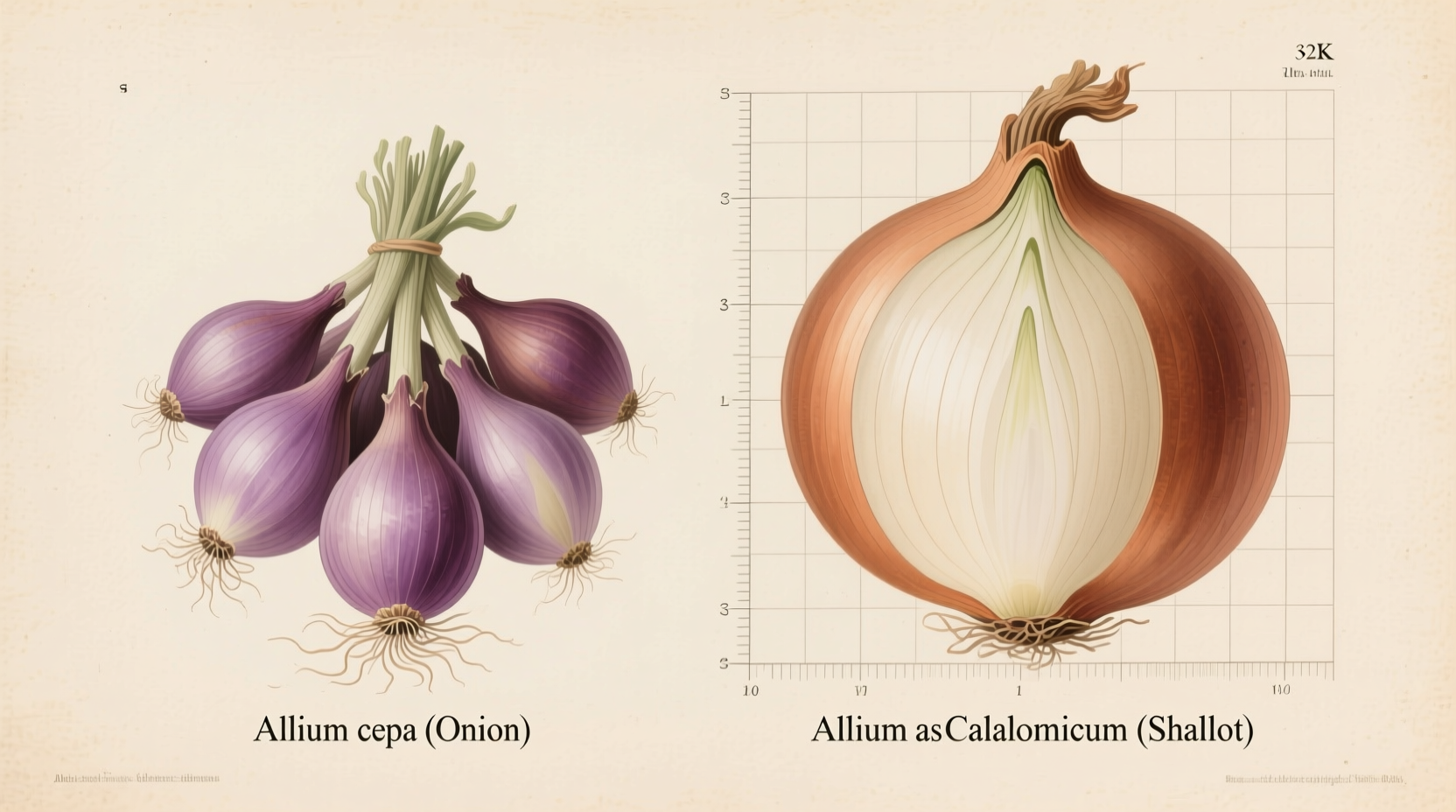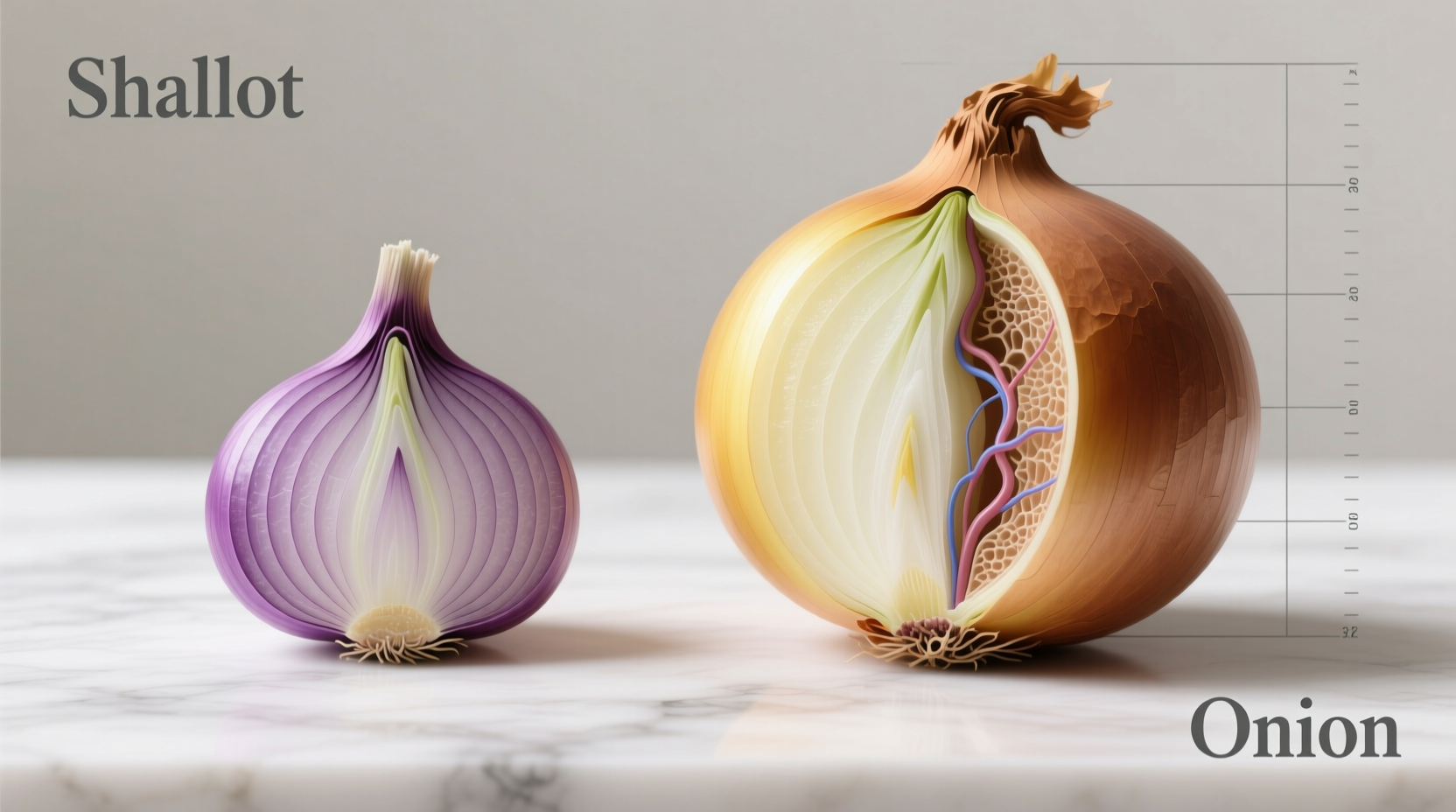Ever found yourself staring at recipes that call for shallots when you only have onions in your pantry? You're not alone. Understanding the differences between these two allium cousins can transform your cooking from good to exceptional. As a professional chef with years of experience balancing flavors in both high-end restaurants and home kitchens, I've seen how this simple knowledge gap affects countless cooks.
Why This Comparison Matters for Your Cooking
The choice between shallots and onions isn't just about availability—it directly impacts your dish's final flavor profile, texture, and even cooking time. Getting this decision right means the difference between a sauce that beautifully complements your protein and one that overpowers it. Let's break down exactly when and why you should reach for each.
Visual Identification: Spot the Difference Immediately
Before we discuss flavor chemistry, let's establish how to identify each at the market. Many home cooks struggle to distinguish them visually, especially when recipes simply say "shallot" without clarification.
| Feature | Shallots | Onions |
|---|---|---|
| Shape | Elongated, oval with tapered ends | Rounded or flattened spheres |
| Skin Color | Purple-tinged copper or gray | Yellow, red, or white |
| Internal Structure | Multiple cloves like garlic | Concentric rings |
| Size Comparison | Typically 1-2 inches long | Varies from small pearl to large Spanish |

Flavor Chemistry: What Makes Them Taste Different
The distinctive flavors come down to their chemical composition. According to research from the USDA Agricultural Research Service, shallots contain higher concentrations of fructose and lower amounts of pungent sulfur compounds compared to yellow onions. This scientific difference explains why shallots deliver that prized sweet-garlic complexity while onions hit with more aggressive sharpness.
When raw, shallots offer a milder bite that works beautifully in vinaigrettes and fresh salsas without overwhelming other ingredients. Onions, particularly yellow varieties, contain more allicin—the compound responsible for that characteristic pungency—which dissipates during cooking but creates deeper caramelized flavors.
Cooking Performance: How They Behave Under Heat
Understanding how these alliums transform during cooking is crucial for recipe success:
- Shallots: Caramelize faster due to higher sugar content but can burn more easily. Ideal for quick reductions, pan sauces, and dishes requiring delicate onion flavor without prolonged cooking.
- Yellow Onions: Withstand long cooking times beautifully, developing rich umami notes. Perfect for soups, stews, and dishes requiring foundational flavor that simmers for hours.
- Red Onions: Maintain more structural integrity when cooked, making them better for grilling and roasting where visual appeal matters.
Professional chefs often use shallots when creating fine-dining sauces where subtle flavor nuances matter, while onions form the "holy trinity" base in many traditional cuisines.
Nutritional Comparison: Health Benefits Side-by-Side
Both provide valuable nutrients, but with some noteworthy differences according to USDA FoodData Central:
- Shallots: Contain 30% more antioxidants than yellow onions, particularly flavonoids like quercetin. Higher in vitamin B6 and manganese per serving.
- Yellow Onions: Provide more vitamin C and dietary fiber. Slightly higher in calories due to greater water content.
For maximum health benefits, include both in your diet—shallots raw to preserve delicate compounds, onions cooked to enhance certain antioxidant properties.
Practical Substitution Guide: When You're Missing One
Running short on shallots? Here's how to adapt without compromising your dish:
- Shallot substitute: Use 1 small shallot = 1/2 small yellow onion + pinch of garlic powder. For raw applications, soak chopped onion in cold water for 10 minutes to reduce pungency.
- Onion substitute: When a recipe calls for onion but you only have shallots, use 2 shallots for every 1 small onion to achieve similar volume and flavor intensity.
Remember that red onions make poor substitutes in cooked dishes due to color bleeding, while sweet onions like Vidalias lack the necessary pungency for savory applications requiring yellow onions.
Culinary Applications: Best Uses for Each
Professional kitchens maintain both for specific purposes:
- Reach for shallots when: Making French vinaigrettes, delicate seafood sauces, or finishing dishes where subtle onion flavor is needed. They're essential in classic preparations like beurre blanc and beurre rouge.
- Choose onions when: Building flavor foundations for soups, stews, or braises. Yellow onions form the base of mirepoix in French cuisine and sofrito in Latin cooking. Their stronger flavor holds up to long cooking times.
Cost and Storage Considerations
Shallots typically cost 2-3 times more than yellow onions and have a shorter shelf life—about 2-3 weeks in a cool, dark place compared to onions' 1-2 months. This explains why many home cooks default to onions, but understanding when the premium is worth it elevates your cooking.
Pro storage tip: Keep both in mesh bags with good air circulation, never in plastic which traps moisture and accelerates spoilage. Never refrigerate whole onions or shallots—the cold temperature causes them to absorb moisture and spoil faster.
Common Mistakes to Avoid
Even experienced cooks make these errors:
- Using the wrong variety: Red onions in cooked dishes where their color bleeds unattractively
- Incorrect substitution ratios: Using equal volumes when shallots pack more flavor per ounce
- Overcooking shallots: Their lower water content means they burn faster than onions
- Storing with potatoes: Both emit gases that accelerate each other's spoilage











 浙公网安备
33010002000092号
浙公网安备
33010002000092号 浙B2-20120091-4
浙B2-20120091-4